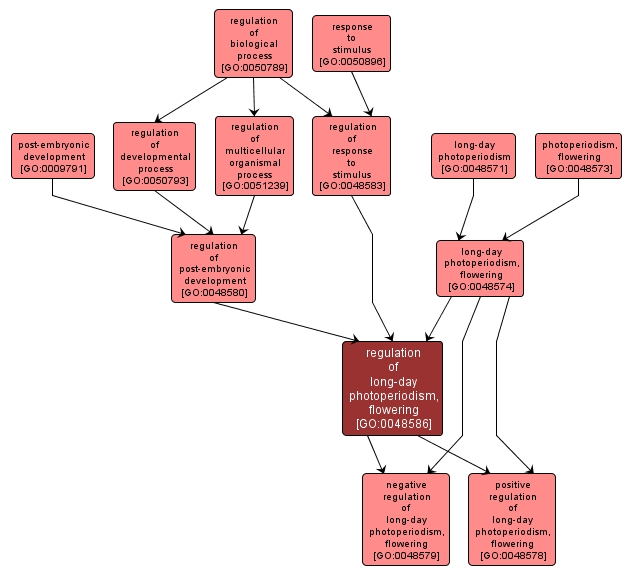GO TERM SUMMARY
|
| Name: |
regulation of long-day photoperiodism, flowering |
| Acc: |
GO:0048586 |
| Aspect: |
Biological Process |
| Desc: |
Any process that modulates the frequency, rate or extent of long-day photoperiodism, where the response associated with the photoperiodism is flowering. Flowering is defined by the switch from the vegetative to the reproductive phase. |
|

|
INTERACTIVE GO GRAPH
|














